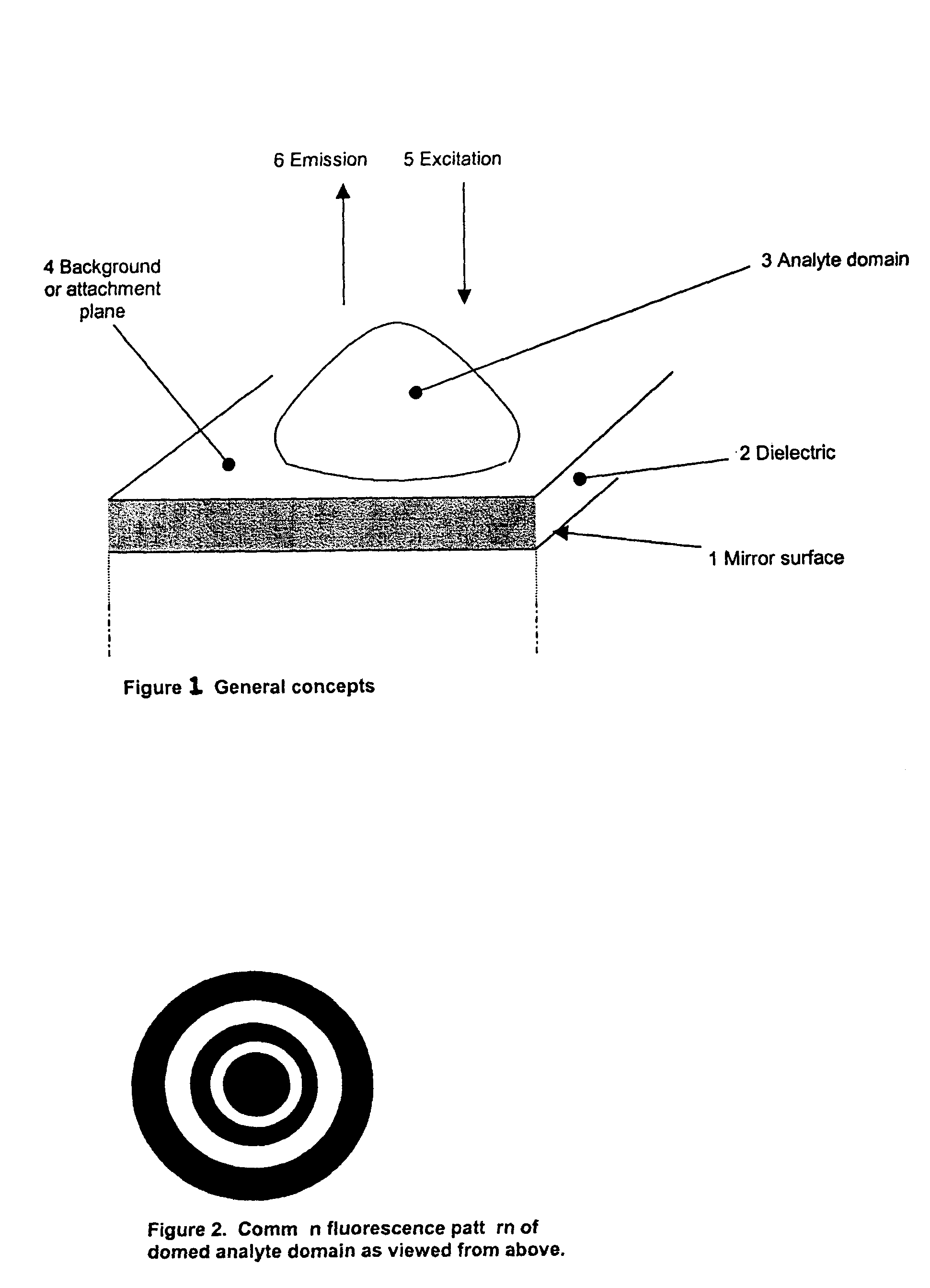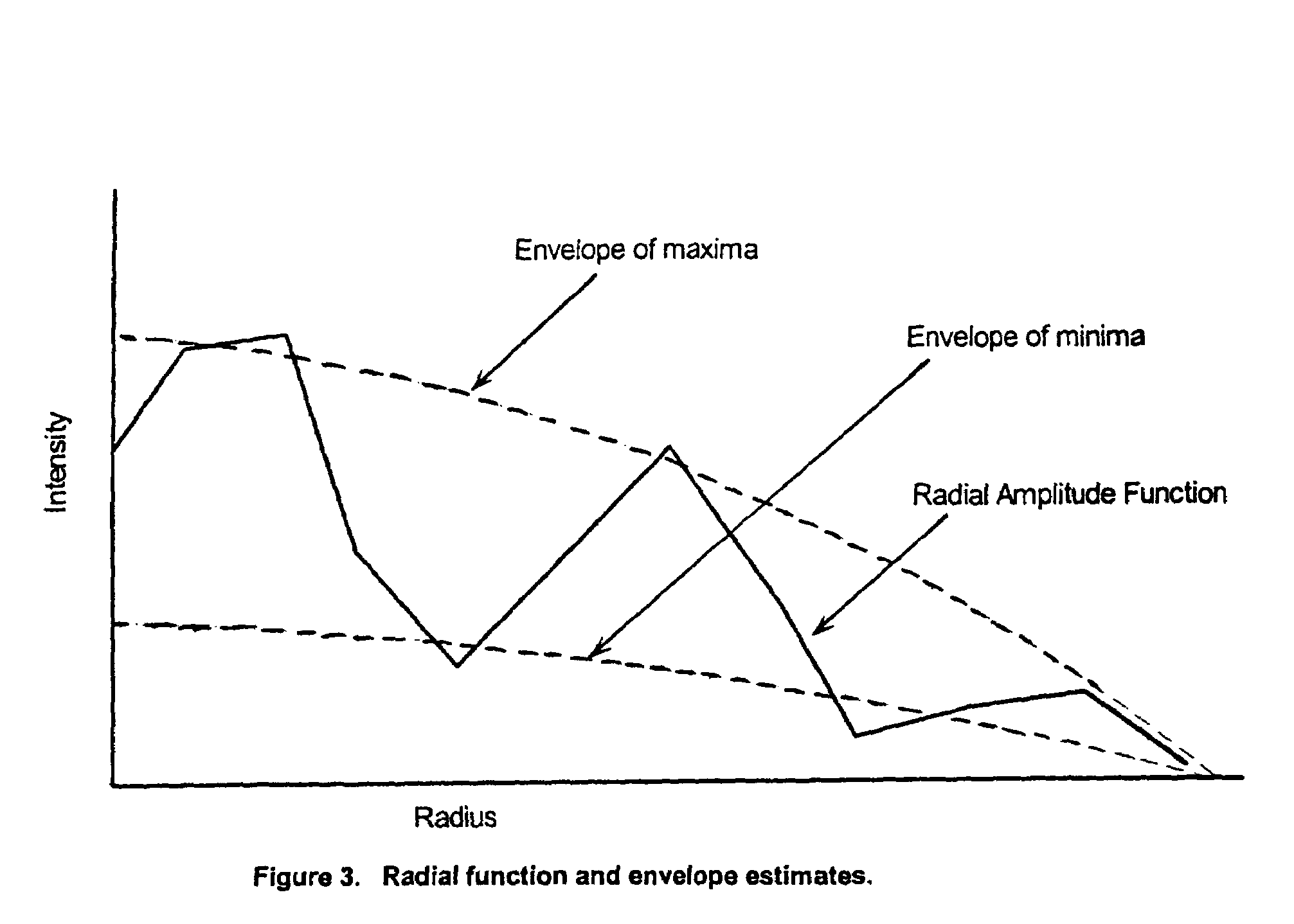Reflective substrate and algorithms for 3D biochip
a technology of reflective substrate and biochip, applied in the field of reflective substrate and algorithms for 3d biochip, can solve the problems of complex and unsatisfactory wave dielectric solutions, and achieve the effect of eliminating major background artifact emissions
- Summary
- Abstract
- Description
- Claims
- Application Information
AI Technical Summary
Benefits of technology
Problems solved by technology
Method used
Image
Examples
example
[0044]To test the arrangement, microspots were applied to substrates which contained a mixture of a polyurethane-based hydrogel and Cy5 fluorescent dye so as to form a series of three-dimensional tiny mounds or domains spaced apart on surfaces of the slides. Two different sets were used, the slides of one set were purchased from Corning and were transparent aminosilane-coated slides. The other set of slides were mirrored, having a thin aluminum film that was highly reflective, atop a thin substrate, with the aluminum being coated with a layer of silica of appropriate thickness. These microspots were deposited using two different pin sizes, one set of spots on each set of slides was deposited using large pins having a diameter of about 625 microns and a second set was deposited using small pins having a diameter of 350 microns. Once the microspots had polymerized, both sets of slides were imaged using a Perkin-Elmer ScanArray-Light microarray laser scanner that was set with the appro...
PUM
| Property | Measurement | Unit |
|---|---|---|
| refractive index | aaaaa | aaaaa |
| thickness | aaaaa | aaaaa |
| reflectivity | aaaaa | aaaaa |
Abstract
Description
Claims
Application Information
 Login to View More
Login to View More - R&D
- Intellectual Property
- Life Sciences
- Materials
- Tech Scout
- Unparalleled Data Quality
- Higher Quality Content
- 60% Fewer Hallucinations
Browse by: Latest US Patents, China's latest patents, Technical Efficacy Thesaurus, Application Domain, Technology Topic, Popular Technical Reports.
© 2025 PatSnap. All rights reserved.Legal|Privacy policy|Modern Slavery Act Transparency Statement|Sitemap|About US| Contact US: help@patsnap.com


